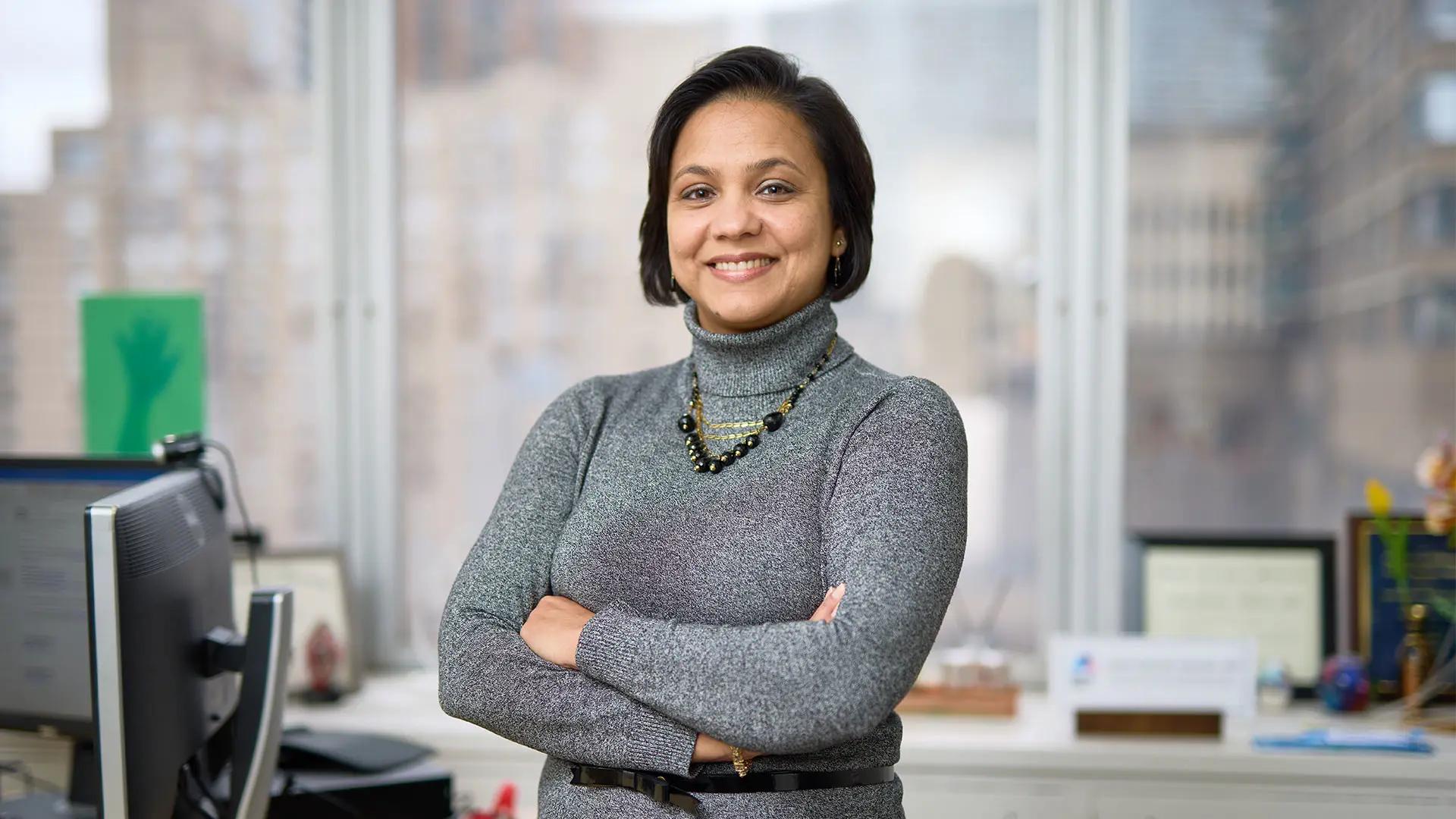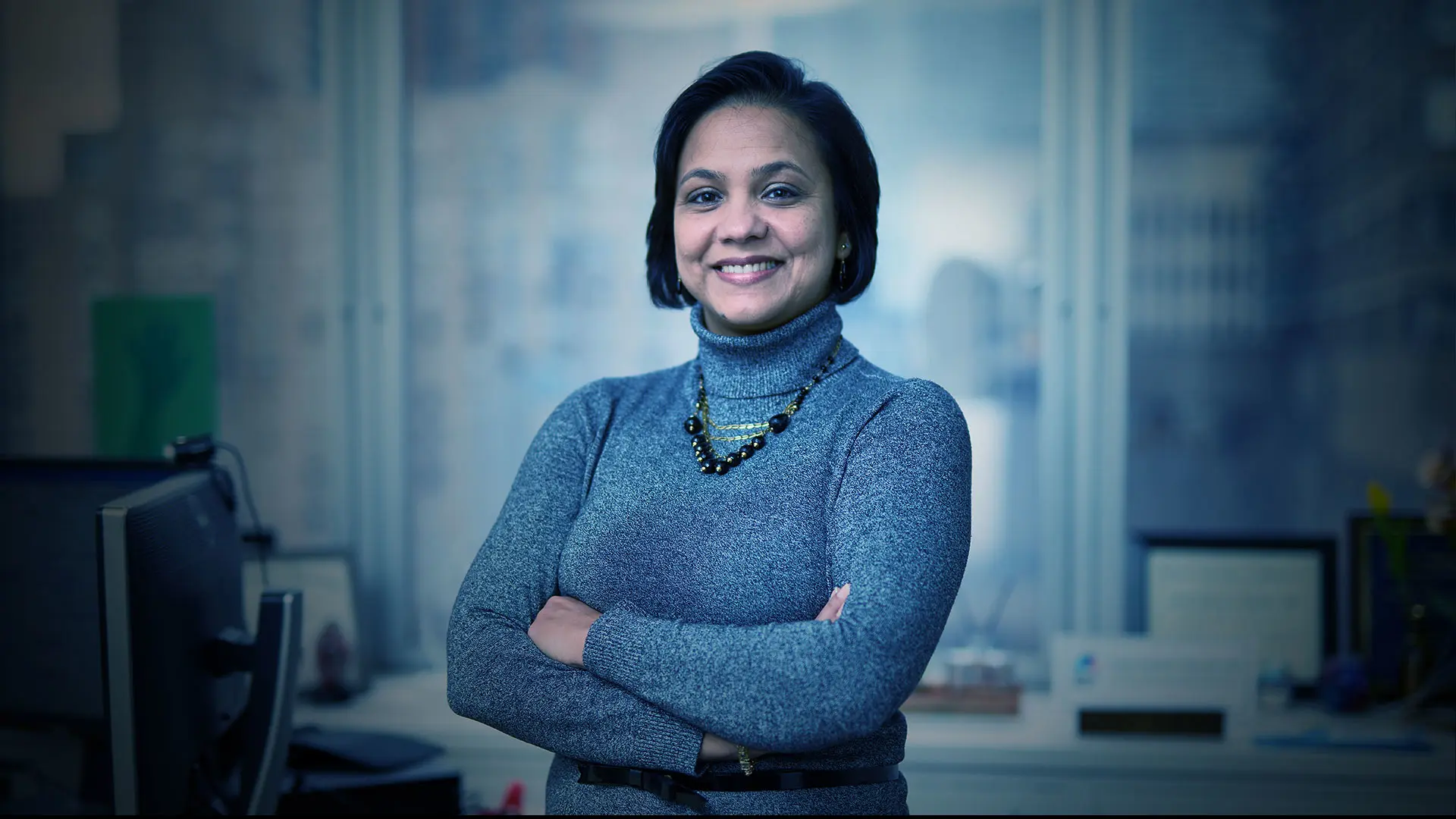Utilizing the latest generation of neurostimulator technology, Joohi Jimenez-Shahed, MD, Associate Professor of Neurology, and Neurosurgery, Icahn School of Medicine at Mount Sinai, is able to record brain activity during implantation and upon patient discharge and then use those recordings to correlate brain signals, or local field potentials (LFPs), with stimulation.
Mount Sinai recently created the Nash Family Center for Advanced Circuit Therapeutics (C-ACT) to serve as a hub linking multiple scientific disciplines and clinical teams to advance the use of deep brain stimulation (DBS) and other therapies to treat a variety of medication-resistant neuropsychiatric disorders—Parkinson’s disease (PD), obsessive compulsive disorder (OCD), and Tourette syndrome (TS) among them. C-ACT Founding Director Helen S. Mayberg, MD, who was newly elected to the National Academy of Sciences, is internationally renowned for her study of brain circuits and her pioneering research for depression.
A leading member of the team is Brian H. Kopell, MD, who has advanced the use of intraoperative imaging during DBS. He serves as Director of the Center for Neuromodulation and Co-Director of the Bonnie and Tom Strauss Movement Disorders Center with Director Susan Bressman, MD, Mirken Family Professor of Neurology, an acclaimed researcher on the genetic causes of dystonia and PD. Dr. Jimenez-Shahed is the Medical Director of Movement Disorders Neuromodulation and Brain Circuit Therapeutics and a team member of the Bonnie and Tom Strauss Movement Disorders Center.

Joohi Jimenez-Shahed, MD
“Previously, we did not know what was going on in patients who underwent implantation because we lacked the technology to measure and relate brain signals with what we observed clinically in terms of symptom improvement,” explains Dr. Jimenez-Shahed. “The technology creates opportunities for us to better understand these disease states and enhance the patients’ outcomes through therapy. Ultimately, when patients do better, it could also make DBS—which is still a fairly underutilized treatment, broadly speaking—more accessible.”
With new technology for DBS, we can focus attention on brain signals in PD patients.
Although the benefits of DBS are well established among patients with PD, the treatment is not indicated for TS, necessitating more research on its efficacy. By recording and assessing intraoperative and postimplantation brain activity among TS patients, Dr. Jimenez-Shahed aims to gain more data and insights to help facilitate regulatory approval and improve patient outcomes.
“With this neurostimulator technology, we are able to focus attention on brain signals in a patient with PD who has undergone DBS and, based on our observations, make more precise stimulation programming decisions,” says Dr. Jimenez-Shahed. “It has optimized the first programming session we do with patients because we can see their brains responding in real time to the stimulation we are delivering and assess improvements in their clinical measures. Thus, it significantly shortens a challenging, iterative, and time-consuming process, making it much easier for patients.”
Although this technology has proven invaluable in advancing understanding of disease states and improving patient outcomes, there are patients with PD and TS who either do not benefit from treatment or are not satisfied with their outcomes. That raises questions as to which patients are best suited for DBS and the factors that influence results—questions that Dr. Jimenez-Shahed is also exploring.
“We have gained some invaluable insights as to how distress at home, medical issues, and other environmental factors can influence manifestations of the disease, but I do not know that we can broadly apply those observations to everyone,” Dr. Jimenez-Shahed says. “For that reason, the establishment of a patient registry is vital because it enables all of us in the field to have conversations about patterns and shared experiences.”
Dr. Jimenez-Shahed is playing a key role in two such registries. One, the International Deep Brain Stimulation Registry and Database for Gilles de la Tourette Syndrome, is sharing data and best practices to enhance outcomes and provide guidance to regulatory agencies. The other, the Registry for the Advancement of Deep Brain Stimulation in Parkinson’s Disease (RAD-PD), is a national, multicenter patient registry that is addressing evidence gaps in the use of DBS for PD, sharing data, and developing recommendations for improving clinical practice. A pilot project of this registry is nearing conclusion, after securing funding from the Michael J. Fox Foundation and using the Neuropoint Alliance as a data coordinating center.
200 patients recruited for a new PD registry, with a goal to expand to 1,000
“We have recruited approximately 200 Parkinson’s patients with complete baseline data, more than 150 patients with complete surgery data, and we are in the first part of our follow-up phase, collecting data from more than 50 patients following optimization of their therapy,” Dr. Jimenez-Shahed says. “We will be analyzing that data to see if we can identify preoperative predictors as to who will have better outcomes with DBS therapy.”
Ultimately, Dr. Jimenez-Shahed envisions expanding the PD registry to 1,000 patients. “As we gather more data, we can start to explore factors such as common side effects of therapy and best practices for managing them,” she says. “Those findings will enable us to further refine DBS for the benefit of our patients.”
In this news video, watch as a Mount Sinai team implants the DBS device and Dr. Jimenez-Shahed demonstrates how the neurostimulator works in a 17-year-old Tourette syndrome patient.
